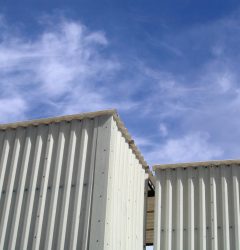Understanding Condensation in Your Storage Unit

Condensation can be a common challenge in storage units, especially during temperature fluctuations, where a cold night gives way to a warmer day. This transition causes moisture in the air to settle on surfaces, leading to the formation of condensation. While this natural occurrence might seem harmless, it can pose a threat to items stored, particularly those susceptible to mold and mildew.
Why Mold is a Concern: Certain materials, like particle board and fabric, are more prone to mold growth and condensation. Furniture items such as couches, chairs, and high chairs, if not properly cleaned and protected, can become breeding grounds for mold in a humid environment. Mattresses and box springs, being dense and often retaining moisture, are also high on the list of items susceptible to mold.
Reducing the Risk: Storage facility owners can take proactive steps to minimize condensation-related issues. Adequate ventilation is crucial, ensuring proper airflow within the storage units. Additionally, implementing climate control features can help maintain a consistent temperature, reducing the likelihood of temperature differentials that lead to condensation. Encouraging customers to use moisture-absorbing products like silica gel packets and placing items on pallets to allow air circulation are practical steps towards preserving the condition of stored belongings.
By understanding the causes and implementing preventive measures, both storage facility owners and customers can work together to create a storage environment that safeguards against condensation and its potential consequences.
Stay up to date on 6Storage events, webinars, and tips by following us on Linkedin, Facebook, and Instagram.
Related Post
Follow Us
© Copyright 6Storage 2024. All Rights Reserved.






